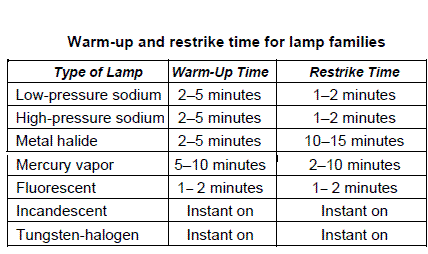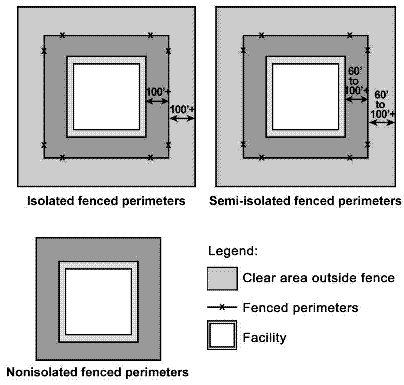- This topic has 1 reply, 1 voice, and was last updated 2 years, 11 months ago by .
-
Topic
-
Which is the best kind of lamp recommended for illuminating security fence and adjoining areas?.
Which is the best kind of lamp recommended for illuminating security fence and adjoining areas?.
When power returns after a power failure which kind of lamp out of Sodium vapour,Mercury vapour,Metal halide,Induction lamp etc will reignite quicker than other types?. What are the other considerations required to select a lamp for security fences or areas?.
Viewing 1 replies (of 1 total)
Viewing 1 replies (of 1 total)
- You must be logged in to reply to this topic.

 Fenced perimeters require the lighting specifications indicated in UFC 4-020-02. Specific lighting requirements are based on whether the perimeter is isolated, semi-isolated, or non isolated (see figure below). – Isolated fenced perimeters are fence lines around areas where the fence is 100 feet or more from buildings or operating areas. The approach area is clear of obstruction for 100 or more feet outside of the fence. Other personnel do not use the area. Use glare projection for these perimeters, and keep patrol routes unlit. – Semi-isolated fenced perimeters are fence lines where approach areas are clear of obstruction for 60 to 100 feet outside of the fence. The general public or installation personnel seldom have reason to be in the area. Use controlled lighting for these perimeters and keep patrol routes in relative darkness. – Non isolated fenced perimeters are fence lines immediately adjacent to operating areas. These areas may be in an installation or public thoroughfares. Outsiders or installation personnel may move about freely in this approach area. The width of the lighted strip depends on the clear zones inside and outside the fence. Use controlled lighting for these perimeters. It may not be practical to keep the patrol area dark.
Fenced perimeters require the lighting specifications indicated in UFC 4-020-02. Specific lighting requirements are based on whether the perimeter is isolated, semi-isolated, or non isolated (see figure below). – Isolated fenced perimeters are fence lines around areas where the fence is 100 feet or more from buildings or operating areas. The approach area is clear of obstruction for 100 or more feet outside of the fence. Other personnel do not use the area. Use glare projection for these perimeters, and keep patrol routes unlit. – Semi-isolated fenced perimeters are fence lines where approach areas are clear of obstruction for 60 to 100 feet outside of the fence. The general public or installation personnel seldom have reason to be in the area. Use controlled lighting for these perimeters and keep patrol routes in relative darkness. – Non isolated fenced perimeters are fence lines immediately adjacent to operating areas. These areas may be in an installation or public thoroughfares. Outsiders or installation personnel may move about freely in this approach area. The width of the lighted strip depends on the clear zones inside and outside the fence. Use controlled lighting for these perimeters. It may not be practical to keep the patrol area dark. 